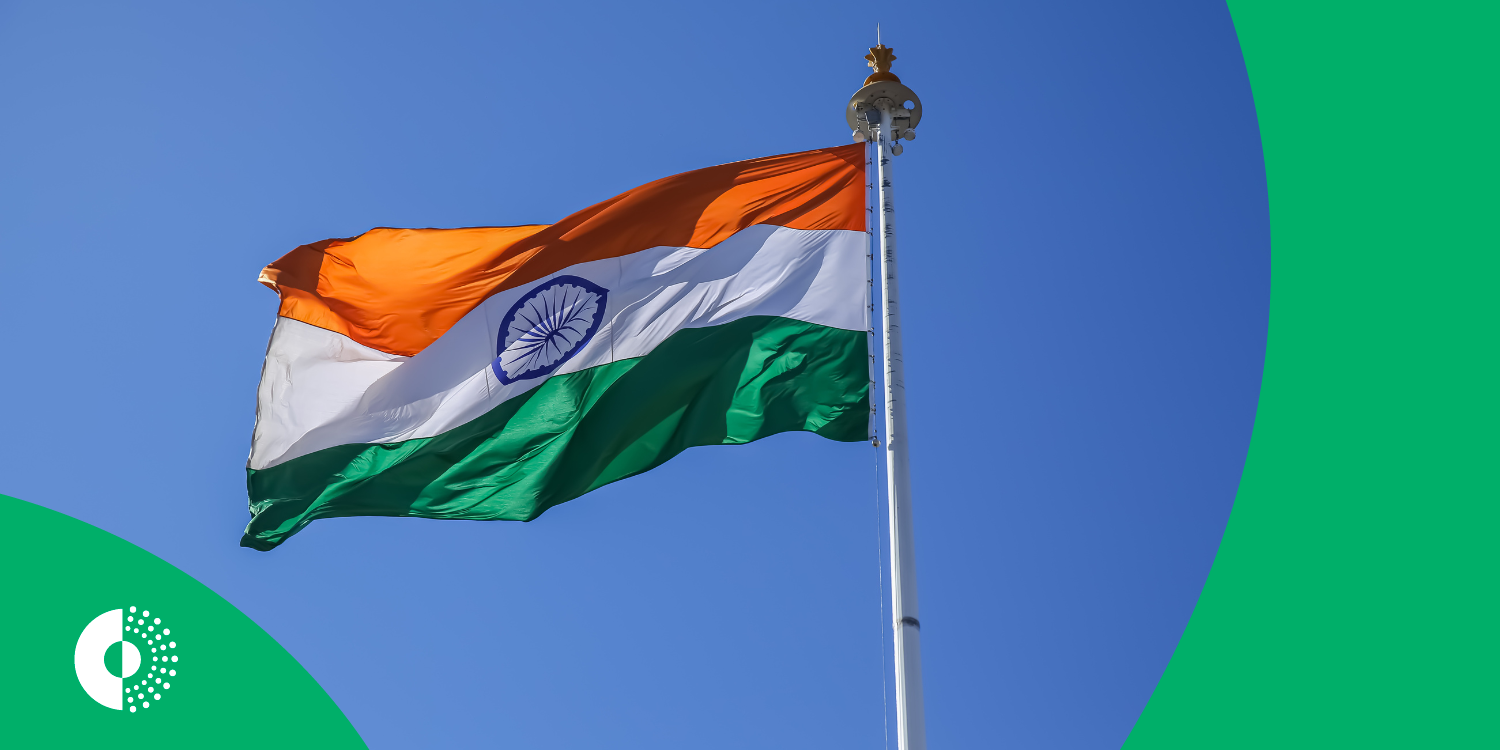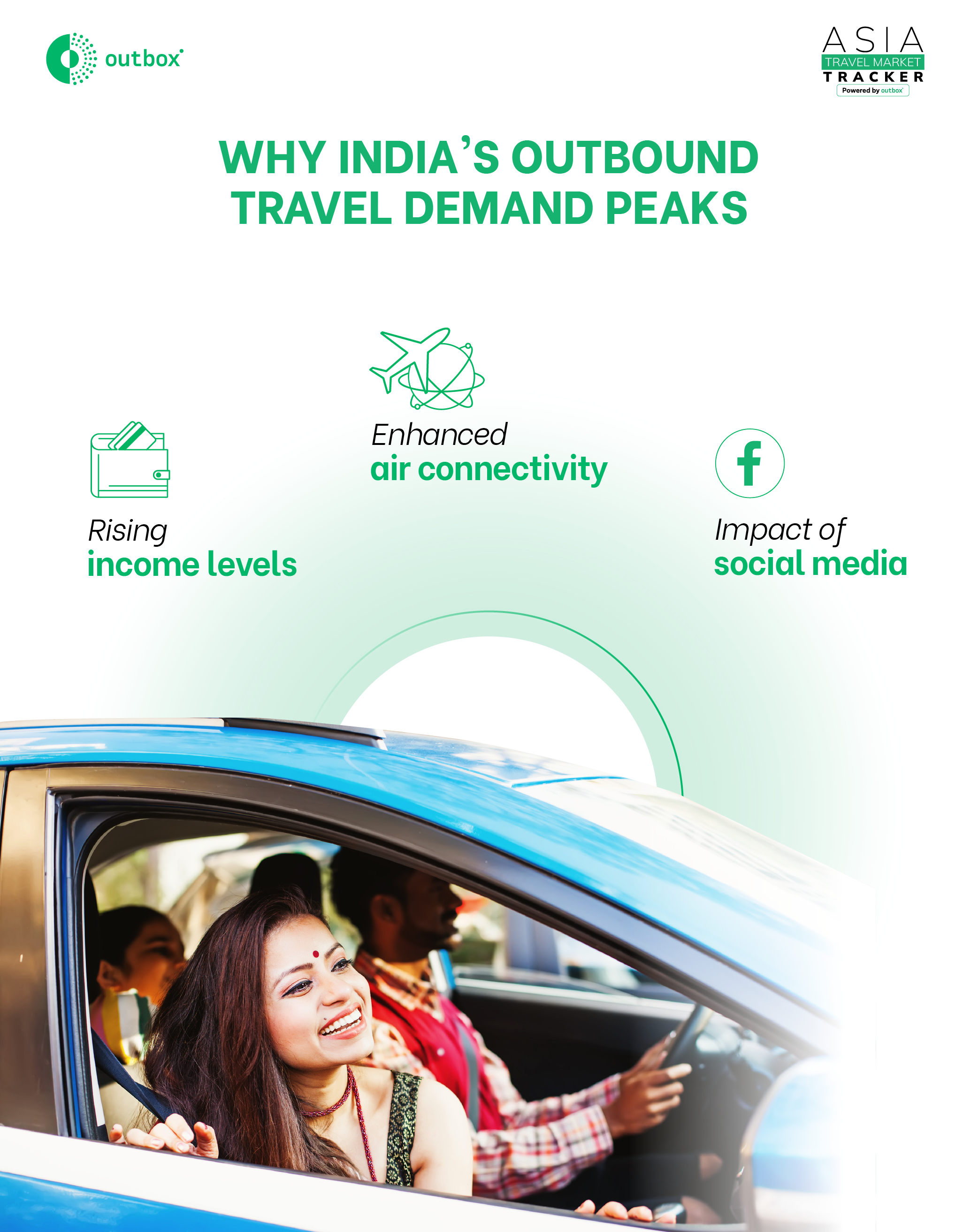India’s outbound travel market has reached an unprecedented milestone, with over 6.52 million Indian travelers going abroad in January 2024 alone—an impressive 17% increase compared to the same period in 2023. In 2023, total outbound trips reached a record 27.27 million, surpassing pre-pandemic levels. This surge is driven by three key factors: rising income levels, improved air connectivity, and the growing influence of social media.
 1. Rising Income Levels: The Foundation of Travel Growth
1. Rising Income Levels: The Foundation of Travel Growth
India’s economic growth has been a significant driver of its rapidly expanding outbound tourism. According to the Ministry of Statistics and Programme Implementation (MoSPI), India’s per capita Net National Income (NNI) at current prices increased from ₹86,054 in the financial year 2020-21 to ₹98,118 in 2022-23, reflecting an annual growth rate of approximately 6.9%.
This increase in disposable income has led to a growing middle class that is eager to explore international destinations. As a result, more Indians can afford outbound travel, which reflects a shift in consumer behavior from domestic to global exploration. Between 2014 and 2019, outbound departures grew at a compound annual growth rate (CAGR) of 7.98%, according to the Ministry of Tourism (MoT) of India. This highlights a strong correlation between economic expansion and demand for travel.
The change in consumer behavior aligns with the trajectory of China’s outbound travel boom in the early 2000s. If India continues on this path, annual outbound trips could reach 80 to 90 million by 2040, positioning the country as one of the world’s largest source markets for international travel.
2. Enhanced Air Connectivity: Making International Travel More Accessible
India’s aviation sector is rapidly evolving, significantly improving access to international travel. The introduction of new airline routes and expanded direct flight options has made travel more accessible. IndiGo, India’s largest airline, is expanding its international reach, increasing its destinations from 26 in 2021 to approximately 40 by March 2025. This includes the introduction of premium “stretch” cabins on key domestic routes.
Government initiatives have played a crucial role in enhancing global connectivity. The National Civil Aviation Policy (NCAP) of 2016 aims to boost international ticket sales to 200 million by 2027, fostering a competitive market environment. Additionally, the Regional Connectivity Scheme (UDAN) seeks to improve air connectivity between unserved and underserved airports, making air travel more affordable and accessible.
These efforts have resulted in significant infrastructure development. By November 2024, over 1,700 aircraft orders had been placed, and 91% of the ₹91,000-crore airport development budget had been utilized.
As a result, international travel has become more accessible to a broader segment of Indian travelers. In 2019, India recorded 26.92 million outbound trips. Since then, post-pandemic recovery has been remarkable, with 2023 witnessing a new high of 27.27 million trips.
3. Impact of Social Media: Shaping Travel Aspirations
The digital revolution has transformed how Indians discover, plan, and experience travel. Social media platforms, particularly Instagram, YouTube, and travel vlogs, significantly influence destination choices. The rise of the FOMO (fear of missing out) culture has heightened interest in trending global destinations such as Dubai, Singapore, Paris, and Bali.
Travel influencers and user-generated content drive aspirational travel, motivating both first-time and repeat travelers to explore new locations. Tourism boards and travel brands are also capitalizing on digital campaigns to engage this market. For example, the Singapore Tourism Board’s “Passion Made Possible” campaign featured collaborations with Indian influencers and celebrities, successfully positioning Singapore as an aspirational destination for Indian millennials. Similarly, airlines like Emirates frequently showcase Indian travel bloggers in their campaigns to promote direct routes to Europe and the United States.
The impact of digital engagement on travel decisions is evident in the numbers: India’s outbound travel demand in the first half of 2023 grew by 13.73% year-on-year, following a 12.28% increase in the first half of 2019. This demonstrates the accelerating influence of digital platforms on vacation choices.
Conclusion
India’s outbound travel market is experiencing remarkable growth. Rising income levels, improved air connectivity, and the influence of social media are all contributing to the emergence of a new generation of Indian travelers. As this trend continues, destinations and travel businesses must adapt to changing preferences by offering tailored experiences and strategic engagement to effectively tap into this high-potential market. The question is no longer whether India will become a major outbound source market, but rather how quickly it will reach its full potential.

 1. Rising Income Levels: The Foundation of Travel Growth
1. Rising Income Levels: The Foundation of Travel Growth


